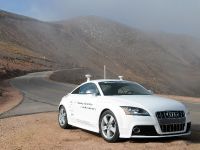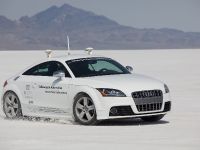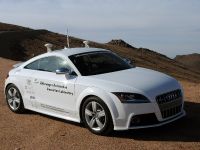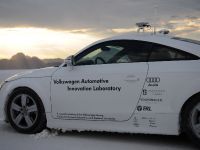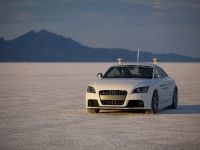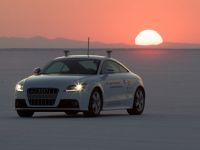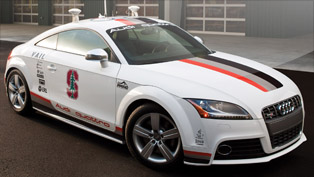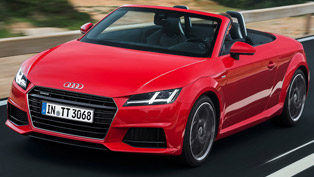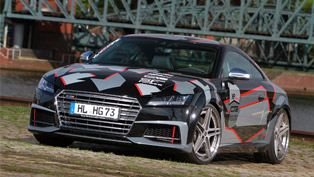Autonomous Audi TTS - A car from the future
Volkswagen Group Automotive Innovation Laboratory (VAIL) developed Autonomous Audi TTS, which features future driver assistance technologies to bring better driving experience to the customers. There are a lot of examples in movies where cars can easily safely operate without direct input from a driver. Autonomous Audi TTS coupe is going to be a sensation worldwide featuring exactly this system.
Dr. Burkhard Huhnke, executive director of the Electronics Research Laboratory, believes that the technology found in Autonomous Audi TTS will help to reduce the number of crashes on the roads and it will allow better reactions to safety hazards to reduce road congestion.
The partners in this project are Volkswagen Group Electronics Research Laboratory (ERL), Stanford University Dynamics Design Lab (SDDL), one of the member labs of VAIL -Volkswagen Group Automotive Innovation Laboratory, Sun Microsystems, who teamed to develop the Autonomous Audi TTS. Everyone of them has a specific role. ERL convert the vehicle to drive by wire, SDDL will develop robust control algorithms that enable the vehicle to drive at the limits of handling and Sun Microsystems are specifying a hardware platform that can run Stanford's real time algorithms and develop a framework that enables Real Time Java (Java RTS).
Autonomous Audi TTS will be able to navigate many types of driving situations. One of the future demonstrations will be a a run up Colorado's famous Pikes Peak to replicate the 12.4-mile Pikes Peak International Hill Climb, where the car will show its performance and handling.
Drive-by-wire includes modified steering: "APA-BS" (Axially Parallel Actuation-Braun-Schweig), a new production electric power steering system with direct by wire control through custom ERL Electronics. The throttle will be controlled from VW ERL to reproduce signals to emulate a driver pressing on the throttle. The system features Active brake booster from Continental with by-wire control through ERL Electronics. The transmission will be also modified to change gears by using ERL Electronics. The parking brake will be used from from VW Passat.
Autonomous Audi TTS will feature additional safety technologies. The car can be easily shut down remotely, if there are any faults. The position of the vehicle will be measured by an Applanix POS LV420 GPS and Inertial Measurement Unit.
The vehicle will feature two independent systems, the initial controller development is being done on an XPC target using Matlab and Simulink, both of which are the standard research tools from SDDL. The final controls are being run on ruggedized custom-built solutions running a Core2Duo CPU and Solaris operating system that is being developed in collaboration with Sun Microsystems.
The car is not planned to go on sale. These projects will promote a leadership in the long-term regarding various real-world automotive topics. The systems showed in Autonomous Audi TTS are going to be built-in future vehicles to improve peoples life.
Autonomous Audi TTS specifications:
- Official Name: Autonomous Audi TTS
- Make and model: 2009 Audi TTS
- Engine: 2.0 turbocharged FSI direct injection engine
- Transmission: 6-speed S tronic double clutch transmission
- Fuel Consumption: City 21 mpg / Highway 29 mpg / Combined 24
- Power: 265 hp @ 6000 rpm
- Torque: 258 lb-ft @ 2500-5000 rpm
- Top Speed: 155 mph (249 km/h)
- Acceleration 0-60 mph: 4.9 seconds
- Weight incl. sensor around 1470 kg / 3240 lbs
